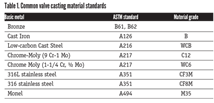Manufacturing Supply Disruptions Could Last Into 2023
A combination of factors is causing fundamental shifts in supply chain approaches across the industry. These include pandemic lockdowns, blocked shipping lanes, container scarcity, material and component shortages, extreme weather events, rising prices and military conflict.
Edited by Margo Ellis
.jpg;maxWidth=385)
Supply chain disruption could continue for more than another year, according to the newest Resilient M4.0 Supply Chain survey conducted by the NAM’s Manufacturing Leadership Council. The MLC is the digital transformation arm of the NAM.
What manufacturers are doing about it: Supply chain organizations are reassessing traditional supply chain strategies, reducing network complexity and integrating key functions.
- They are also redesigning processes and harnessing the power of digital tools to transform their supply chain ecosystems.
Universal disruption: Even supply chain structures with some local or regional networks have been affected by recent events, according to the MLC’s survey.
- Ninety percent of respondents reported suffering either significant (52.5%) or partial (39%) disruption in the past two years. Just 0.5% said they had seen no disruption.
Improving resilience: While many manufacturers have taken action to reduce supply vulnerabilities, 73% of companies said their current supply chains are not fully protected, and 12% said they believe their supply chains lack resilience.
Integrated supply chains: While today just 19% of companies said their supply chain structures are fully integrated, this proportion is set to more than double (to 47%) within the next two years.
- The number of companies that remain dependent on siloed operations is set to fall from 14% to 4% over the same period.
Digital opportunities: The race to fully digitize more supply chain operations is picking up speed.
- In nearly every supply chain function, companies said they are planning significant increases in digital adoption in the next two years to streamline their supply chain organizations.
Obstacles to progress: Many obstacles to future supply chain development involve issues with industry partners. Among the challenges cited by manufacturers in the survey were the following:
- Differences in digital maturity among partners (54%)
- A lack of common data platforms (53%)
- Problems transforming traditional supply chain processes (29%)
- Upgrading legacy equipment (26%)
- A lack of skilled employees (22%)
Review the data in detail and read manufacturer responses to survey questions here.
RELATED CONTENT
-
New Technologies Solve Severe Cavitation Problems
An advanced anti-cavitation control valve design enabled by 3D metal printing solved a power plant’s severe cavitation problem and dramatically improved its bottom line.
-
Crane ChemPharma and Energy Announces New Saunders Valves Facility
The 100,000-sq-ft facility is planned to open in the fall of 2022.
-
Which Gate Valve is Best for Today's Waterworks Systems?
A historical perspective may provide the answer.








 Unloading large gate valve.jpg;maxWidth=214)


